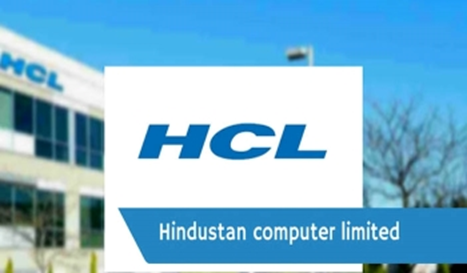Technology
Standard features of Tier 3 data centers
Data centers are constructed to provide high-quality storage and hosting services for all business setups of all kinds and sizes. Vendors offering these sophisticated IT services ensure to deliver 99.999 percent uptime to provide complete peace of mind for their customers. As securing client data is a big responsibility, service providers have to make persistent efforts to protect their infrastructure from vulnerabilities like power failure, natural disasters and cyber-attacks.
To help potential clients of data center facilities, The Uptime Institute has created a four-tier ranking system to provide a benchmark to identify a reliable service provider. This institute has developed a standard four-tier ranking system to explain reliability of data center. This ranking system starts with Tier I data centers (warehouse with power supply) and continues to Tier II and Tier III and end up at Tier IV (data storage warehouses with extra cooling and redundant power supply. Facilities are ranked by storage capacities, power and cooling facilities they possess to offer its clients.
How is T 3 datacenter helping businesses?
100% uptime is critically essential for every business. Organizations require uninterrupted access to their files to serve their clients efficiently. This why tier 3 data centers have become the best bet for the enterprises seeking non-stop business continuity. Redundant power and cooling supplies will offer them maximum uptime. In addition to providing continuity, these IT vendors pay particular attention to maintenance to keep all the components functional. Surplus availability of components will help them to fulfil the promise of 100% uptime, even in the absence or unavailability of one component. Functionalities and infrastructure remain unaffected in case of power and cooling failures.
What are standard features of Tier 3 data centers?
When we talk about Tier III data storage facilities, it involves features like power supply, cooling and building infrastructure fronts to the levels of a server rack. It doesn’t include architectural design and construction of IT facility. If you are seeking for an IT facility offering file storage, look for these standard features to avail the benefits of using T3 data centers.
Presence of reliable power supply
According to the quality standards given by the Uptime Institute; facilities should not solely depend on utility power supply for electricity. They consider it an unreliable source of power. A reliable IT vendor must have diesel generators as a backup to ensure uninterrupted power supply. Power supplies are connected with an automatic transfer switch (ATS) to automatically switch over the backup generators without delay. Tier 3 facilities possess two ATS switches fitted parallel to each other to ensure redundancy and maintainability.
Availability of backup generators
Diesel generator with a reserve of fuel supply for minimum 12 hours is a mandatory requirement of Tier III facilities. The facility should have two tanks each with a capacity to store fuel for 12 hours. Moreover, both the tanks possess two or more fuel pipes for the tank to maintain continuous fuel flow to generators, without affecting the fuel supply towards generators.
Separate power distribution panels
Power distribution panels are necessarily required to distribute electricity to the IT devices like servers and networks via UPS and generators. Distribution boards also provide power for non-computing devices like air conditioning units and components of infrastructure systems. ATS is used for used to maintain redundancy and simultaneousness, separate distribution panels. If a single board is fitted with two ATS, it has to be switched off for the maintenance or replacement of any component.
This is why Tier 3 facilities require two or more power lines between ATS, power distribution panel and UPS to maintain uninterrupted flow.
Multiple UPS for server racks and network infrastructure
UPS are critical for any IT facility. When it comes to T3 storage, they become mandatory. They facilitate power supply from distribution panel to servers and network infrastructures. Redundancy can be maintained after distributing the KVs among UPS units. Each UPS unit is connected with just a single distribution box to ensure redundancy and maintenance. This will help to avoid single UPS failure if single power distribution circuit goes down due to UPS maintenance and failure.
Dual power supply for server racks
Server racks are the data banks of storage facilities. They need continuous power supply without delay. This is why they are connected with two power distribution boxes to fulfil the description of T3 IT facility. A static switch is fitted to supply electricity from both power distribution boxes to give single output and transfer power distribution box in milliseconds to another power supply in case of failures to eliminate downtime of servers.
Endnote:
T3 data centers have become popular among organisation due their quality and reliability. Business owners should consider these key points to select the best IT facility to avail uninterrupted access to their data and clients.
Education
Full Form of http || HTTP Full Form

The HTTP Full Form: The Protocol for Internet Communication 4 you
The HTTP Full Form is Hypertext Transfer Protocol. HTTP is one of the fundamental building blocks of the World Wide Web. Its complete form is Hypertext Transfer Protocol, and it was created in 1989 by Tim Berners-Lee. HTTP is a communication protocol that lets you browse web pages, images, videos, and other media stored on servers in different parts of the world without downloading them to your device.

Definition and Overview of HTTP || full form of http
Education
HCL Full Form: Unveiling the IT Giant’s Identity
Technology
3 Tips to Improve Your Site Security with VPS Hosting

VPS hosting offers you the sweet spot between shared hosting and dedicated hosting. You get access to a customizable and isolated hosting environment at an affordable price. And, if you choose a reliable hosting provider in India, you can ensure that it is a secure hosting solution. Additionally, you are getting isolated virtual servers and the ability to tweak security with root access that makes it even more secure.
However, if you are still anxious over the security concerns with VPS hosting in India, there are ways to improve your website’s security. Take a look at these 3 simple tips:
-
Try Using Third-Party Security Applications
When you invest in a VPS hosting plan in India, you also get access to a bundle of third-party security applications from all over the world. They have their own special area of focus. So, while some offer efficient malware protection, others can help you protect against DDoS attacks. You can learn about these applications and find the ones which work best for your website’s needs.
-
Change Default Ports and Shut Unused Ports
Most websites usually have the default security configuration when they are set up. It makes it easy for hackers to carry out automated cyberattacks through bots. That is why you should change these default ports. It will hardly take a few minutes to do that with the help of a guide that you can find in no time.
Similarly, you may notice several unused, open ports in your network. Each of these ports is a possible pathway for another cyberattack. So, you should be careful and close any open ports that you are not using at any time.
-
Develop an Access Hierarchy
The reason why most users prefer VPS hosting is that the hosting companies allow them to customize anything on the server. You can delete, edit, or copy anything that you want at any time. However, this flexibility can also be a cause of concern, especially if you have several people working on the server and they don’t know what they’re dealing with. For instance, someone may accidentally delete a lot of important files on your server. It is also possible that your server will crash at some point because of this level of access.
That is why it is important to develop an access hierarchy. With VPS hosting, you get to create multiple user profiles and individually grant them access to do specific things. So, while your system admin can have complete access over the server, another employee like someone who designs your email newsletters may not get access to the HTML files of your website. With restricted access, you can ensure everyone works smoothly while preventing accidental disasters.
VPS hosting offers the benefits of dedicated hosting but on a smaller scale. So, you have your isolated virtual servers where you have complete freedom to do things as you want to. And, with these simple tips, you can ensure that your server is as secure as possible without compromising on performance and reliability.
-
Technology6 years ago
Developing Workplace Face Recognition Devices and Controls
-

 Business News5 years ago
Business News5 years agoFacts to know about commercial closing
-
Home Advice6 years ago
Things to Remember When Shopping For Recycled Plastic Adirondack Chairs
-
Technology6 years ago
Use WhatsApp Web Login on PC
-
Entertainment6 years ago
Meanings of WhatsApp Symbols, Emoticons
-

 Education5 years ago
Education5 years agoHuman Body And Its Interesting Features
-
Entertainment6 years ago
Ganesh Chaturthi Songs (Mp3, DJ Songs, Remix) Ganpati Songs Free Download
-

 Sports News4 years ago
Sports News4 years agoHow to Build a Perfect Fantasy Cricket Team?









